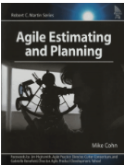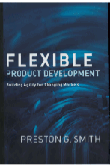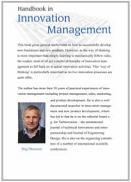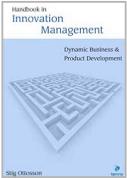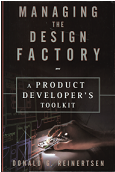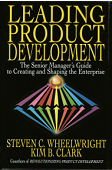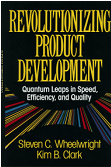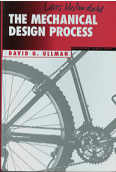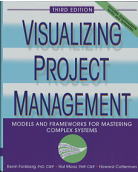
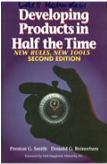
Preston G. Smith, Donald G. Reinertsen:
Developing Products in Half the Time,
2nd ed., John Wiley & Sons, Inc, 1995, ISBN 0-471-29252-4, (298 pages, 155*235 mm)
If you only intend to buy one book on product development, then buy this one!
This is simply a very good book that in 290 pages covers "everything" in product development from identified business opportunity, economic analysis, strategies and methods, teambuilding, organization, processes, control, risk management, over the importance of top level management to production.
The language is clear, the subject structured and the text rich on information. I have only two caveats 1/ page 55 Preston/Reinertsen says that it is not possible on a regular basis to product develop at high speed while at the same time develop new technology - but this is possible if you use DPD, Dynamic Product Development strategy!, and 2/ page 243-249 covers concurrent engineering and does contain a few errors.
But on the whole this probably is the best book you can buy.
Kevin Forsberg, Hal Mooz, Howard Cotterman:
Visualizing Project Management, A Model for Business and Technical Success,
John Wiley & Sons, Inc, 2000, ISBN 0-471-35760-X. 354 pages, 195*242 mm)
Almost everything thinkable about product development projects: methods, theory, and processes. Quite a lot of new stuff (really useful) that you want find anywhere else. Very readable; I put high value on this book.
If you just intend to buy two books on product development, then make this the second one.
With the book comes a CD with a short introduction to the "cards on the wall" planning method and a brief presentation of software endorsed by the author's company.



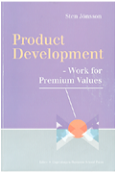
Sten Jönsson:
Product Development - Work for Premium Values,
Liber/CBS Press, Kristianstad 2004, ISBN 91-47-07511-2, ISBN 87-630-0134-9
(304 pages, 165*242 mm)
Professor Sten Jönsson has together with his research team studied a new automobile project at Volvo Car Corporation and thereby made interesting observations and drawn titillating conclusions.
Especially the constructivist based discussion and the description of, and thoughts on, how people argue their cause in high-speed projects was very enriching I think.
The text from the back of the cover describes the book in the following way.
"This book is about how teams can keep value-driven product development together and focused in spite of complex organizational settings and changing brand values.
Through good leadership, and good team spirit, large projects can maintain their dynamism if people "talk their walk" and thereby coproduce a good story - a story good enough to tell the customer. We will see, increasingly, the story of how the new car model was developed as part of marketing efforts. The brand values, embedded in the story of the heroic efforts made by the project team to accomplish this valuable product, serve as criteria when members choose what solution to propose to the design problems at hand. The good story will visualise the brand values at the same time as it stages the product. The narrative can be a management tool!
Yes, we need the bureaucratic structures (target costing, cost reviews, quality assurance) to keep projects within reasonable limits, but those trappings do not create value, nor does an old specification of a product in a changing world. This book provides an implicit attack on the idea of gate systems so prevalent in the academic literature on product development.
Sten Jönsson is professor of Scandinavian Management at GRI, a research institnte of the School of Economics and Commercial Law at Goteborg University. He was the editor of the Scandinavian Joumal of Management until recently, and he headed the Scandinavian Academy of Management during its first 7 years. He and his colleagues have been allowed to observe, directly, the management of product development projects at Volvo Car Corporation for several years."
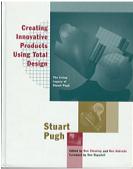
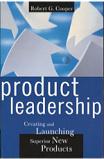
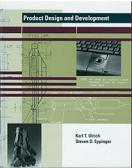
Robert G. Cooper:
Product Leadership, Creating and Launching Superior New Products,
Persus Books, 1998, Cambridge Massachusetts, ISBN 0-7382-0010-7.
(314 pages, 149 * 228 mm)
Most larger industrial companies now have some kind of formal product development process in place. This is often a stage-and-gate process. The most common of these is Stage-Gate, a brain child of professors Cooper and Edgett.
The Stage-Gate (SG) process is a so called static process and ful of complications. SG is definitely not a process for the development of novel products. It is best suited for slight modifications, re-engineering, of mature products.
The omniprecens of SG motivates a study of this process, and who could better describe SG than Cooper, one of its creators.
Karl T. Ulrich, Steven D. Eppinger:
Product Design and Development,
McGraw-Hill, Inc, 1995, ISBN 0-07-065811-0. (289 pages 190*240 mm)
This book by Ulrich and Eppinger is somewhat of a reference for static, non-dynamic, design oriented product development, or re-engineering really, of mature products.
This static machine-like process is easy to teach to students and further, it is easy to comprehend for someone oblivious to the complexities of actually developing novel products. Maybe this is the reason for the popularity of this book as a text book at universities.
The book is well structured and there is information given that could benefit even someone opposed to the theory endorsed by the authors.
Stuart Pugh:
Creating Innovative Products Using Total Design,
Addison-Wesley Publishing Company, 1996, ISBN 0-201-63485-6.
(544 pages, 190*240 mm)
This book, edited by Don Clausing and Ron Andrade is a compilation of the work of the late Stuart Pugh.
There is a clear emphasis on design over the much larger subject of product development. Stuart Pugh introduced the matrix for comparison of concepts that came to bear his name and he stressed the use of charts and diagrams akin to what is said to be typical of Toyota's product development.
Pugh designed a model for product development that is suitable for redesign at the most. He tried to connect to the quality movement. There is a lot of QfD, Design for X (DfX), house-of-quality, etc. Pugh called his theory Total Design.
Why read this book? Because of the discussion on engineering design and concept development, not for the product development discussion.
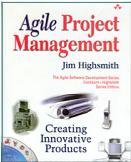
Highsmith, J.:
Agile Project Management: Creating Innovative Products,
Addison Wesley, 2004, Isbn: 0321219775. (277 pages, 186*231 mm)
Jim Higsmith is one of the founders of the Agile Alience, a consortium of software developers and software companies dedicated to the improvement of software development.
Agile methods are dynamic and are in their philosophy not very far from Dynamic Product Development (DPD). This text on Agile Project Management is a bit wordy, it lacks proper references and some of the non software examples feels a bit forced. But the ideas presented are interesting. Depending on your level of expertiese you will find many new statements and facts or just find affirmation for what you already knew.
If you are knew to the subject or just curious on Agile methods, read this book.
Free book on product development
Handbook in Product Innovation Management, by professor Stig Ottosson. Download.
This book by Professor Stig Ottosson, gives over its 183 pages a modern tretease of product development and innovation management.
Some parts of the book cover the absolut frontline of present research, presenting material yet unpublished elsewhere.
(I do have the copy-right owner's permission to publish the book here).
Preston G. Smith,
Flexible Product Development: Building Agility for Changing Markets (Hardcover), Jossey Bass, 2007, ISBN-13: 978-0787995843, (304 pages, 231 x 155 x 30 mm)
This is like a cook book with different techniques described, one after the other. Not bad at all. Read and be inspired, there are nuggets of gold here.
Mike Cohn,
Agile Estimating and Planning (Paperback),
Prentice Hall (10 Nov 2005), ISBN-13: 978-0131479418,
(368 pages, 234 x 175 x 25 mm)
Some of this is old, much of it is relatively new. Good stuff. Geared towards agile methods, where the presented methods are mainstream thinking. A good read.
Donald G. Reinertsen:
Managing the Design Factory: a Product developers Toolkit,
The Free Press, 1997, ISBN 0-684-83991-1. (269 pages, 163*242 mm)
It is easy to get the impression that this is a follow-up to the previous 'Developing Product in Half the Time'. That book was so good that I must have this one too. But, no, think twice before you get this one.
Sure, there are wise words and profound statements, but they are far between and the stuff is not as densely packed as in the previous book.
Steven Wheelwright & Kim Clark
Leading Product Development, The Senior Manager´s Guide to Creating and Shaping the Enterprise,
The Free Press, 1995, ISBN 0-02-934465-4, (176 pages, 242*160 mm)
Some say that it is enough to read Wheelright & Clark. I don't agree. Although they have had great impact on product development literature. So, from that reason alone, it can be interesting to read this book.
If one stumbles upon a management edition, and especially if it is abbreviated, then you know that you will not have to wade through unnecessary text. This is such a book.
There is some useful information, clearly worth a reading.
Steven Wheelwright & Kim Clark,
Revolutionizing Product Development, Quantum Leaps in Speed, Efficiency, and Quality,
The Free Press, 1992, ISBN 0-02-905515-6,
Wheelwrite & Clark were for a long time common references in product development literature. I don't think that they have very much to say to contemporary practitioners and researchers in the field.
A reason for acquiring and reading this book would be to educate yourself in classic product development theory.
Stig Ottosson
Frontline Innovation Management
ISBN 978-91-977947-7-0, (285 pages 156*215 mm)
This book by Professor Stig Ottosson can be purchased online at www.ottosson.biz . This book gives a modern theory on product development in a wider sense, covering also business development and marketing. Sales and project management is also discussed in this information dense book. Warmly recommended.
Eric von Hippel,
Democratizing Innovation,
The MIT Press, 2005, ISBN 0-262-00274-4, (241 pages)
This book is available at http://web.mit.edu/evhippel/www/democ1.htm in the form of a pdf-file. You may download the book for non-commercial use, etc.
Eric von Hippel stresses the importance of the user in the innovation process and especially the use of lead user groups. Really worth a read through.
David D. Ullman,
The Mechanical Design Process,
2nd ed, McGraw-Hill, 1997, ISBN 0-07-065756-4, (340 pages, 242*165 mm)
Ullman's book is used as a text book in several Universities and everything is included, House of Quality, P-diagram, Gantt chart, flow chart for design processes, appendix with material data, normal distribution, factors of uncertainty, and human measures.
And yet, the author does not really succed, and besides, the worked example is a really poor design. Interesting as an example of what students are taught, but not more than that.
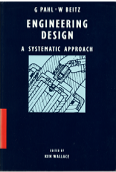
Gerhard Pahl & Wolfgang Beitz,
Engineering Design
(Ken Walace editor), Springer-Verlag, 1988, ISBN 0-85072-239-X,
(397 pages, 239*164 mm)
Many see product development as a form of engineering design. If you look for that aspect then you would benefit from Stuart Pug, Ulrich & Eppinger, David Ullman, and not least Pahl & Beitz and their classic text Konstruktionslehre that came in 1977.
Pahl & Beitz discuss what they call systematic design in chapters: Introduction, Fundamentals, The design process, Product planning and clarification of the task, Conceptual design, Embodiment design, Developing size ranges and modular products, Summary.
Well worth reading if you are a mechanist and design engineer or have an over arching responsibility for development of goods.
Kim Clark & Steven Wheelwright,
The Product Development Cahallenge: competing through speed , quality, and creativity,
Harvard Business review,1994, ISBN 0-87584-609-2, (431 pages, 242 x 163 x 37 mm)
This is an old text now and much less relevant than it used to be. The authors make a number of QFD. The thinking is linear and sequential like the ideas that make up Integrated Product Development. Leafing through this book today one feels like an archeologist digging old remnants. Still, there are some good ideas here. Should you read it, probably not.
Kevin Forsberg, Hal Mooz, Howard Cotterman,
Visualizing Project Management, Models and Frameworks for Mastering Complex Systems,
John Wiley & Sons, 2005, ISBN-10: 0-471-64848-5. (454 pages, 240*193 mm)
This is the third edition of this book. Now on white paper instead of yellow. Extended, improved, well worth to be read.










